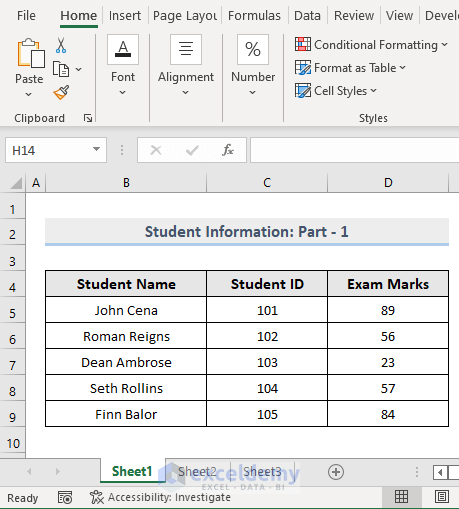Master the Art of Printing Multiple Excel Sheets

Excel offers powerful tools for data analysis and management, but its true potential often goes unnoticed. One of those hidden features is the ability to print multiple Excel sheets simultaneously. This capability is crucial for reports, financial statements, and other documents where consistency across pages is necessary. In this post, we'll explore how to master the art of printing multiple Excel sheets for improved productivity and better organization of your data.
Understanding the Need for Multi-Sheet Printing

The necessity to print multiple sheets often arises when you need to:
- Generate a comprehensive report with various sections.
- Consolidate financial statements, like balance sheets and income statements.
- Ensure consistency in formatting and layout across multiple pages.
Step-by-Step Guide to Print Multiple Sheets

Let’s dive into the process of printing multiple Excel sheets:
- Group Sheets: First, you must group the sheets you intend to print. You can do this by:
- Clicking on the first sheet tab.
- Holding down CTRL or SHIFT to select additional sheets.
- Page Setup: Configure your print settings:
- Go to
File>Print. - Adjust Page Layout, Margins, Page Orientation, and Scaling if needed.
- Go to
- Print Preview: Verify your layout:
- Check the preview to ensure sheets print correctly.
- Adjust if necessary to meet your printing needs.
- Print Sheets: Now, you can print:
- Click
Printto start printing all grouped sheets.
- Click
Advanced Printing Techniques

Here are some advanced techniques for better control:
Adjusting Print Areas

When printing, sometimes you don’t need every cell on your sheet. Here’s how to customize:
- Select the area you want to print.
- Go to
Page Layout>Print Area>Set Print Area.
Printing Headers/Footers

Including headers or footers can improve document identity:
- Go to
File>Print>Page Setup>Header/Footer. - Customize headers/footers as per your need.
Using VBA for Enhanced Printing

VBA (Visual Basic for Applications) can automate your printing tasks:
Sub PrintMultipleSheets() Dim ws As WorksheetFor Each ws In ThisWorkbook.Worksheets If ws.Visible = xlSheetVisible Then ws.PrintOut End If Next ws
End Sub
This VBA code will print all visible sheets one by one.
🔑 Note: Save your workbook as a macro-enabled file before running VBA code.
Tips for Efficient Sheet Printing

Here are some tips to streamline your printing process:
- Use Print Preview: Always check Print Preview to avoid wastage.
- Batch Printing: Group sheets by content or purpose for faster printing.
- Create Print Templates: Set up sheets with predefined print settings.
- Preserve Your Work: Ensure sheets are saved before printing in case of interruptions.
In summary, mastering the art of printing multiple Excel sheets can significantly enhance your document management skills. By understanding the grouping of sheets, setting up print areas, and employing advanced techniques like VBA automation, you can manage your data more effectively. Regularly reviewing the print preview and planning your print jobs will ensure a smooth experience while printing. The ability to control the printing process better allows for well-organized output, which is vital in professional settings. As you practice these techniques, you'll discover more personalized methods to improve your productivity when handling large or complex Excel files.
Can I print selected sheets instead of all at once?

+
Yes, you can selectively print sheets by holding CTRL and clicking on each desired sheet tab before printing.
How can I ensure consistent print settings across sheets?

+
Group the sheets first by selecting one sheet and then holding SHIFT or CTRL to add others. Then apply your settings, which will affect all grouped sheets.
What if I need to print only a portion of each sheet?

+
Set a print area for each sheet or use VBA to define and print specific ranges.